Contents
Overview of Covalent
Business Positioning
Covalent offers Blockchain Indexer services, providing a comprehensive suite of blockchain data APIs that enable developers to conduct queries across multiple blockchains.
Messari’s 2023 DePin sector map included indexers as a part of the DePin ecosystem, categorized under the “Digital Resource Networks” segment. Both The Graph and Covalent are featured as representative projects in this map.
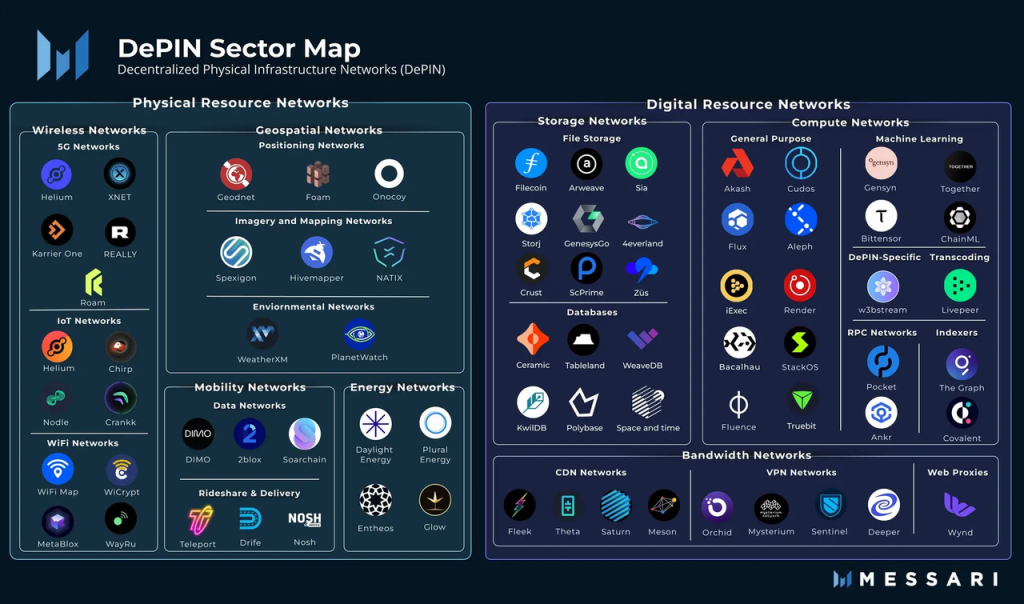
Target Clients
Covalent focuses on serving Business-to-Business (B2B) clientele, a sector comprising a diverse range of DApps and DeFi protocols, as well as centralized crypto enterprises. Notable clients include Consensys (dashboard), CoinGecko (data aggregator), Rotki (tax tools), NFTX (NFT curation), and Rainbow (crypto wallet).
Business Logic
Product Mechanism
Covalent’s core product is the Unified API, which facilitates data transfer between two modules: the client and the server. Through the API, the server can control its system and respond to client requests. Users such as application developers or analytics firms leverage the Unified API to extract a wealth of blockchain data. In the current stage, data providers – predominantly Covalent itself, with plans to integrate third-party providers – retain data ownership. Although many companies have built server-side infrastructure to provide access to blockchain data, most self-built server-side solutions are limited to the RPC layer and often only access unprocessed blockchain data from the target chain.
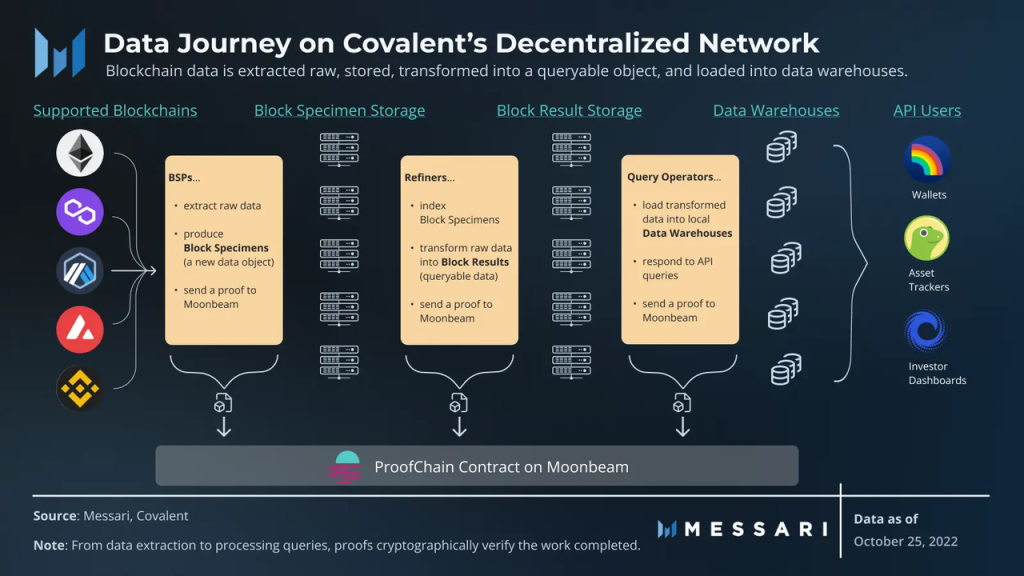
”Base blockchain data” refers to the information that can be directly queried from the blockchain via RPC. However, more sophisticated data analyses, like complex query executions, and relational and trend analyses of historical data, require higher-level data processing and indexer services. These are the types of services provided by Covalent and The Graph.
Leveraging the Unified API, Covalent has also introduced strategic toolkits to facilitate customer integration and product-side presentation.
GoldRush
GoldRush is an open-source, modular blockchain explorer and toolkit provided by Covalent, designed to be integrated into various Dapps and Web3 applications.
In the context of NFT marketplaces like Blur or Web3 gaming platforms, integrating Covalent’s GoldRush module can embed a more user-friendly interface directly within their applications.
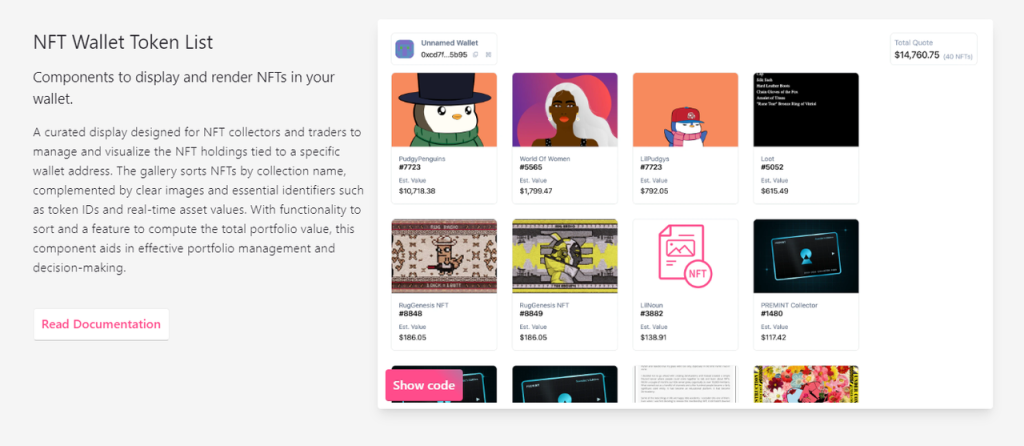
Having outlined Covalent’s industry mechanism, let’s explore how it integrates with tokenomics.
Decentralized Design
Covalent’s decentralized network architecture is designed to accommodate multiple network participants, commonly referred to as “Operators.” Currently, two primary roles have been activated within this network: Block Specimen Producers (BSP) and Refiners. Covalent’s network boasts 15 active BSPs, including notable participants such as Chorus One, Woodstock, StakeWithUs, and 1kx.
The proof and data storage solution based on Moonbeam is an interim measure. Covalent plans to launch its Layer 1 blockchain for ledger purposes and will migrate the staking of $CQT to Ethereum. This migration process is expected to commence by the end of February 2024.
Let us explore the four operator roles in Covalent’s decentralized indexer Network:
- Block-Specimen Producer (BSP), which is currently active within Covalent’s network. BSPs are responsible for uploading raw blockchain data to storage instances. These operators have the flexibility to either run these storage instances locally or outsource the task to storage operators. The latter contributes to increasing data availability, especially when proofs are loaded through IPFS and stored locally. The staking stats for BSPs are as illustrated in the following graph, with the current staking APR exceeding 10%.
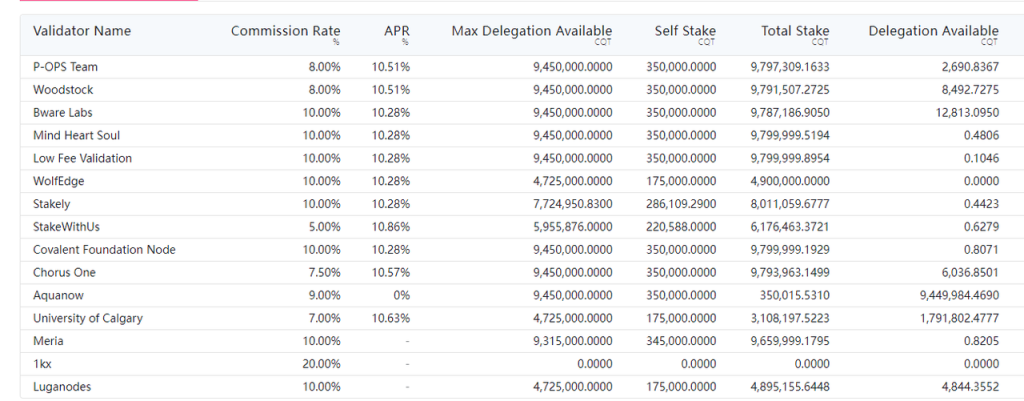
- Refiner, another active role in Covalent’s ecosystem, can access Block Specimens from storage instances and transform this raw data into queryable data objects, known as Block Results. They also publish proofs of their verification work. The following graph is a list of stakers for Refiners:
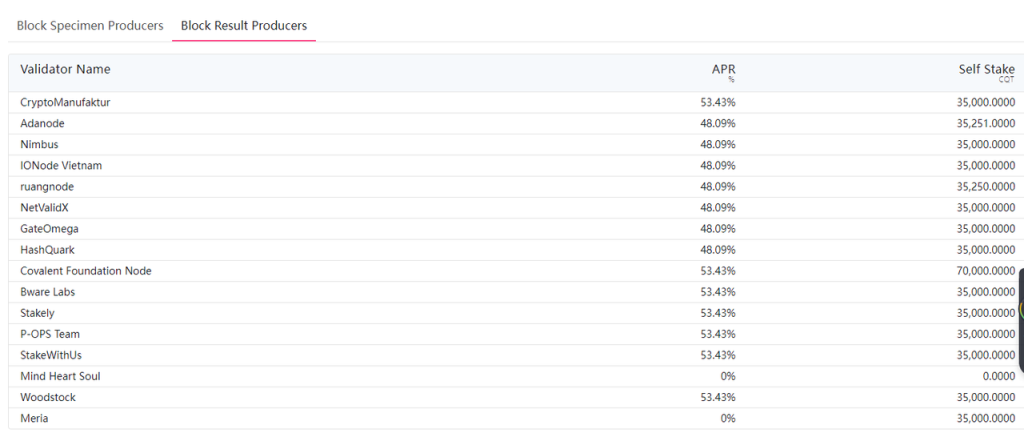
- Query Operator. Before responding to API queries, Query Operators load the transformed data into local data warehouses.
- Delegator. Each network operator, after fulfilling their assigned duties, receives compensation. This compensation is contingent upon the confirmation of each proof by the Delegators for a specified period. Before payment, a group of Delegators is randomly selected from the pool of network operators to serve as Delegators for the audited period.
Currently, the operator roles are filled by members who are part of a whitelist established by the Covalent Foundation. The Covalent Foundation has plans to gradually open these roles to a broader pool of applicants in the future.
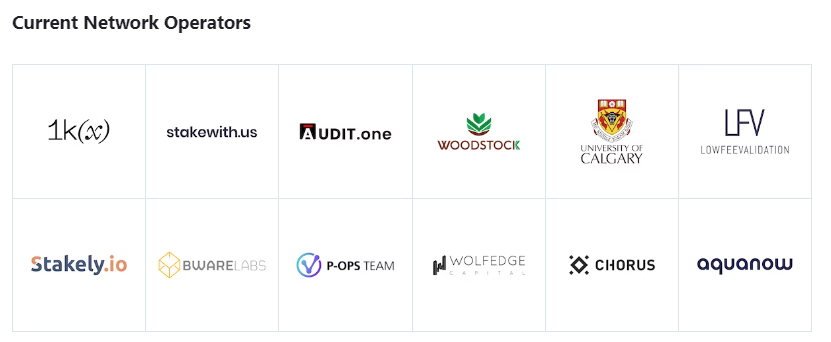
Other Business Operations
Ethereum Wayback Machine
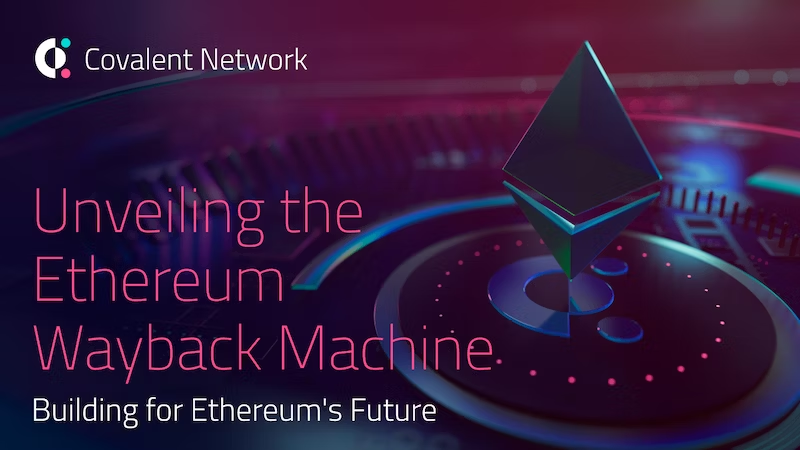
Following the implementation of EIP-4844, a new data structure called “blob” will be introduced. Blob is primarily used for storing information that doesn’t need permanent retention on the blockchain and requires short-term propagation across the network. Blob serves as a temporary storage mechanism on the Ethereum network. The decision regarding the duration and preservation of blob data is left to the discretion of individual nodes, leading to concerns about the long-term data availability for blob data.
Covalent’s Ethereum Wayback Machine is an open-source solution launched to address the issue of long-term data availability. It aims to provide decentralized, cryptographically secure access to historical data for users, positioning it as a form of Data Availability (DA) solution.
For more information, you can read The Ethereum Wayback Machine.
Ethereum Wayback Machine is currently under development and has not yet been officially launched.
It is worth noting that Ethstorage, another project targeting decentralized blob storage, finished a $7 million funding at a $100 million valuation in its seed round in July 2023.
Business Status
Number of Blockchains Supported by the Indexer Service
Covalent currently offers comprehensive historical transaction data for over 211 different blockchain networks.
User Base
Fee Collection Details
Covalent’s 2023 Revenue Performance and Comparative Analysis with The Graph
The Covalent team provided us with some revenue data as follows:
- Covalent’s revenue from the indexer in 2023 amounted to $600,000. This figure is noteworthy as it represents the first year of Covalent’s formal commercial operations, with the revenue journey starting from a baseline of $0 in January 2023.
- Covalent gained over 150 paying customers, predominantly consisting of various institutions and projects.
- Covalent projects an ambitious 100% growth in revenue for the year 2024.
The Graph, another prominent player in this domain, has reported an annualized revenue of over $100,000 in the recent three months.

The Covalent team plans to launch their detailed business metrics in the coming weeks, allowing users to access in-depth information on Covalent’s revenues.
Overview of Covalent’s Clientele
Covalent has established itself as a key player in the B2B sector of blockchain services. Its clientele spans various categories:
Wallets and Data Dashboards: Popular wallets and data dashboards, including Rainbow and Zerion, leverage Covalent’s API to aggregate historical balances and track the profits of DeFi and NFT assets.
Data Aggregator: Platforms like CoinGecko use Covalent’s services to present detailed market data, including price trends, liquidity metrics, and investment returns.
Cross-Chain Projects: Cross-chain liquidity aggregators such as Li Finance rely on Covalent for accessing asset pricing information across different networks.
Cryptocurrency Taxation: Portfolio trackers like Rotki utilize it to extract cross-chain historical balances and pricing data for tax reporting purposes.
DeFi Platforms: Aave, Balancer, Paraswap, Curve, Lido, Frax, and Yearn use Covalent’s services to integrate user data from various chains.
Centralized Exchanges: To comply with tax regulations, exchanges need to extract users’ historical transaction data to generate reports.
Traditional Finance and Custodial Institutions: Fidelity, a global wealth management firm, and EY (Ernst & Young), one of the Big Four accounting firms, Jump Crypto, a notable name in the crypto space, are all among its clientele.
AI Training and Decision Making: Covalent provides crucial on-chain data to projects like Nomis.cc, a multi-chain identity and reputation protocol, and Network3, a distributed computing protocol. This data helps train and enhance decision-making processes for AI models, especially in large-language models.
Additionally, Consensys, the parent company of Metamask, Infura, and Linea, also forms part of Covalent’s diverse client base.
In a strategic expansion move, Covalent has started collaborating with RPC service providers like Chainstack, QuickNode, and Infura. This partnership enables Covalent to offer its indexer services through these providers’ channels, broadening its reach. Notably, the fees generated through Infura alone have already scaled to 100,000+ dollars.
Team, Financing, and Partners
Founders and Team Composition
Covalent was founded and led by Ganesh Swami and Levi Aul.
Ganesh Swami, with a strong foundation in physics and a rich experience exceeding a decade in data analysis, brings a unique perspective to Covalent. He successfully made his first company public on the New York Stock Exchange. Besides, Ganesh scaled heights as a professional mountaineer, including expeditions to Mount Everest. Levi Aul established the first Bitcoin exchange in Canada and was part of the IBM team that developed CouchDB. The core team at Covalent, numbering between 40 and 60 members, comprises a diverse group of professionals, including network architects, data scientists, and software engineers.
Overall, the founders’ backgrounds and their entrepreneurial successes underscore a strong alignment with Covalent’s mission.
Valuation
For assessing Covalent’s valuation, a comparative approach is implemented, aiming to establish a relative valuation by comparing Covalent with two key projects in the decentralized indexing service sector: The Graph and Pocket Network.
As a direct competitor, The Graph’s valuation is particularly relevant. Comparing Covalent to The Graph is crucial for understanding Covalent’s competitive position and potential in the market. Pocket Network operates as a decentralized RPC service and is an upstream entity in the same industry. Its valuation also provides a valuable reference for valuation purposes.
A key observation in this comparative valuation is the nearly 7-fold gap in FDV between Covalent and The Graph. However, when considering the fact that Covalent’s annualized revenue is approximately 6 times that of The Graph, Covalent’s valuation appears to be quite attractive.
Despite having a higher revenue level, Covalent’s valuation is lower compared to Pocket Network. However, both entities are closely matched in terms of overall valuation, each being valued in the range of several hundred million dollars. Notably, Pokt has experienced an impressive nearly 12x increase in value over the past three months, completing a remarkable round of “value discovery.”
In contrast, $CQT has seen a modest increase of about 80% over the same three-month period. This growth appears more aligned with the broader market rebound rather than being indicative of specific capital attraction or investor focus on Covalent.
The Risks
There are two primary risks facing Covalent worth noting:
- If other larger centralized blockchain data service providers, such as Alchemy, Infura, Quicknode, start expanding from RPC into the indexing service field, offering indexing services as well, it could squeeze Covalent’s market share and pricing power. For instance, Alchemy completed the acquisition of the indexing platform Satsuma in September 2023.
- Indexer remains a relatively niche and less recognized field among general investors, lacking significant attention. This trend could continue unless catalyzed by high-impact events or significant market shifts.
Reference
Special thanks to Leo and Bruce from the Pocket Network community for their valuable review and insightful comments on this report.
- Messari: Covalent: A Unified API for Retrieving Blockchain Data
- 1KX: Indexing the universe of blockchains with Covalent
- The Graph Dashboard: https://thegraph.com/explorer/network?chain=mainnet
- Pocket Network Dashboard: https://poktscan.com/



